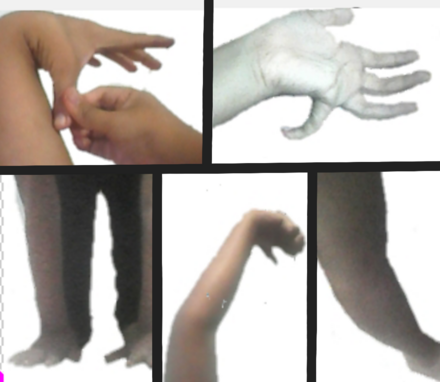Joint Hypermobility
Overview
Hypermobility, commonly referred to as double-jointedness, describes joints that stretch further than normal. This condition allows individuals to perform various contortionist "tricks," such as bending their thumbs backward to their wrists or bending their knee joints backward. While hypermobile joints are prevalent in about 10 to 25% of the population, a subset experiences pain and other symptoms indicative of hypermobility spectrum disorder (HSD). Hypermobility can be a feature of genetic connective tissue disorders such as Ehlers-Danlos syndromes (EDS).
Signs and Symptoms
Individuals with Joint Hypermobility Syndrome may develop several associated conditions due to their unstable joints. These conditions include frequent sprains, tendinitis, or bursitis, joint pain, early-onset osteoarthritis, subluxations or dislocations, knee pain, fatigue after short periods of exercise, back pain, and joints that make clicking noises. Other symptoms include susceptibility to whiplash, temporomandibular joint dysfunction, increased nerve compression disorders, poor response to anaesthetic or pain medication, and "growing pains" in children.
Those with hypermobile joints are more likely to have associated conditions such as ADHD, autism, dyspraxia, fibromyalgia, hereditary connective tissue disorders, mitral valve prolapse, and anxiety disorders.

Causes
Hypermobility generally results from abnormally shaped bone ends at a joint, defects in Type 1 collagen or other connective tissues, and abnormal joint proprioception. These abnormalities can cause joints to wear out, leading to osteoarthritis. The condition tends to run in families, suggesting a genetic basis. Although commonly referred to as double-jointedness, hypermobile joints are not doubled or extra in any sense.


Diagnosis
Hypermobility is diagnosed using the Beighton criteria, which involve a score based on joint flexibility. The criteria include a Beighton score of 5/9 or more and arthralgia for more than three months in four or more joints. Minor criteria include a Beighton score of 1, 2, or 3/9, arthralgia in one to three joints or back pain, dislocation/subluxation in more than one joint, soft tissue rheumatism, marfanoid habitus, and abnormal skin.

The Beighton score is measured by adding points for specific joint movements and extensions.

Treatments
Physical Therapy
It is very important for hypermobile individuals to remain fit to prevent recurrent injuries. Regular, supervised exercise can reduce symptoms by strengthening muscles, which increases joint stability. Low-impact exercises such as closed kinetic chain exercises are recommended. Heat and cold treatments can provide temporary relief for aching joints and muscles.
Medication
Medication is not the primary treatment but can be used to manage related joint pain. Nonsteroidal anti-inflammatory drugs are the primary medications of choice. Narcotics are reserved for short-term use after acute injury and are not recommended for long-term treatment.
Lifestyle Modification
Lifestyle changes can help decrease symptom severity. Activities that increase pain should be avoided. For instance, using an ergonomic keyboard can reduce pain from typing, and bent knees can alleviate pain from standing. Swimming may require extra care to avoid hyperextending joints. Isometric exercises can help strengthen muscles without causing hyperextension.
Other Treatments
Bracing can help temporarily protect unstable joints.



Epidemiology
Hypermobile joints occur in about 10 to 25% of the population.
Self-assessment MCQs (single best answer)
What is the commonly used term for hypermobility?
Which of the following is a common symptom of Joint Hypermobility Syndrome?
What is the primary diagnostic tool used for hypermobility?
Which genetic connective tissue disorder is often associated with hypermobility?
What type of exercises are recommended for people with hypermobility to strengthen muscles without causing hyperextension?
Which of the following conditions is NOT commonly associated with hypermobility?
What is the Beighton score used for?
Which lifestyle modification can help reduce pain from typing for people with hypermobility?
What is a common cause of hypermobility?
Which medication is primarily used to manage joint pain in hypermobility?
Dentaljuce
Dentaljuce provides Enhanced Continuing Professional Development (CPD) with GDC-approved Certificates for dental professionals worldwide.
Founded in 2009 by the award-winning Masters team from the School of Dentistry at the University of Birmingham, Dentaljuce has established itself as the leading platform for online CPD.
With over 100 high-quality online courses available for a single annual membership fee, Dentaljuce offers comprehensive e-learning designed for busy dental professionals.
The courses cover a complete range of topics, from clinical skills to patient communication, and are suitable for dentists, nurses, hygienists, therapists, students, and practice managers.
Dentaljuce features Dr. Aiden, a dentally trained AI-powered personal tutor available 24/7 to assist with queries and provide guidance through complex topics, enhancing the learning experience.
Check out our range of courses, or sign up now!


